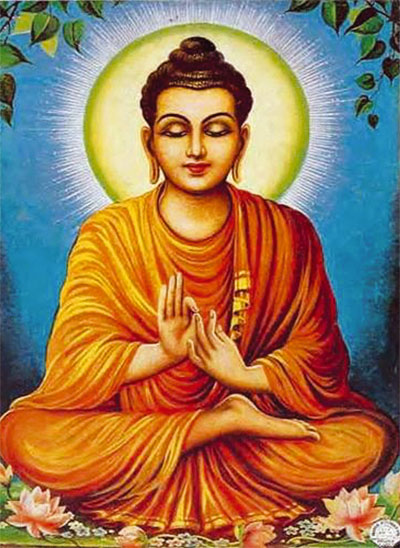
The Bhagwad Gita literally means ‘Song of God’. It begins with the word ‘dharma’ and ends with ‘mama’. Mama means ‘my’ and dharma means ‘essential Being’. Together they mean ‘my essential Being’ which is the theme of the Gita. The purpose of life is to realise one’s essential Being; to discover the supreme Self within and to attain spiritual enlightenment. The Gita forms the philosophical part of the great epic, Mahabharata that is the work of sage Vyasa. It contains nearly a hundred thousand verses.
The central narrative speaks of the rivalry between two royal families, the cousins Pandavas and Kauravas. The Pandavas were five brothers, moral and virtuous. The Kauravas were a hundred brothers, immoral and vicious. Duryodhana, the eldest of the Kauravas, jealous of the wealth and renown of the Pandavas, continuously harasses them. He invites Yuddhisthira, the eldest of the Pandavas, to a game of dice and wins it by deceit. As his prize he strips the Pandava princes of all their possessions.
He also stipulates that the five princes and their wife Draupadi live in exile in the forest for twelve years. At the end of twelve years they were to remain incognito for another year, undetected by the Kauravas. During these thirteen years Duryodhana would rule the kingdom. If the Pandavas served this exile and remained undiscovered in the thirteenth year, the kingdom would be restored to them. The Pandavas complied with all these terms and claim their kingdom at the end of the thirteenth year. But Duryodhana refuses to abide by the agreement. Elders of the kingdom try to negotiate a peaceful settlement. Regardless, the obstinate Duryodhana draws the Pandavas to battle.
On the battlefront, Prince Arjuna, an outstanding warrior, asks Krishna, his charioteer, to drive the chariot between the two armies. There he sees his own guru Dronacharya, his grandsire Bhishma and a host of his dear friends and relatives — all arrayed on enemy lines. Overwhelmed by emotion, the distraught and shattered Arjuna becomes intellectually paralysed. He lays down his bow and arrow and appeals to Krishna for guidance. Krishna’s sermon to Arjuna at Kurukshetra is the Bhagwad Gita. Revived and recharged, Arjuna is charged with a higher vision.
Towards the end of the last chapter Arjuna’s delusion vanishes. He proceeds to battle and emerges victorious. The Pandavas and the Kauravas represent the positive and the negative qualities of an individual. The Kauravas outnumbered the Pandavas – just as negative forces tend to outnumber the positive. Kurukshetra symbolises the conflict between the higher and lower natures in us. The goal of human existence is the realisation of the supreme Self within. For that you need to rise above your involvement with good and bad forces.
This is illustrated with Arjuna receiving the sermon in the chariot between t he Pandava and the Kaurava armies. The Gita’s 701 verses are spread over eighteen chapters which in turn can be divided into three sets of six chapters, explaining Vedic aphorisms as follows: Tat Tvam Asi or That thou art. The first six chapters explain Tvam or Thou, the middle six Tat or That and the last six, Asi or Art.
Tvam is the Self within. Tat, the supreme God. And Asi indicates that the Self in you and God are one. You art God. The Gita leads one to the ultimate state of spiritual enlightenment. Moreover, it offers a philosophy of life which can be translated into practical living in one’s social, official and domestic lives.





Be the first to comment